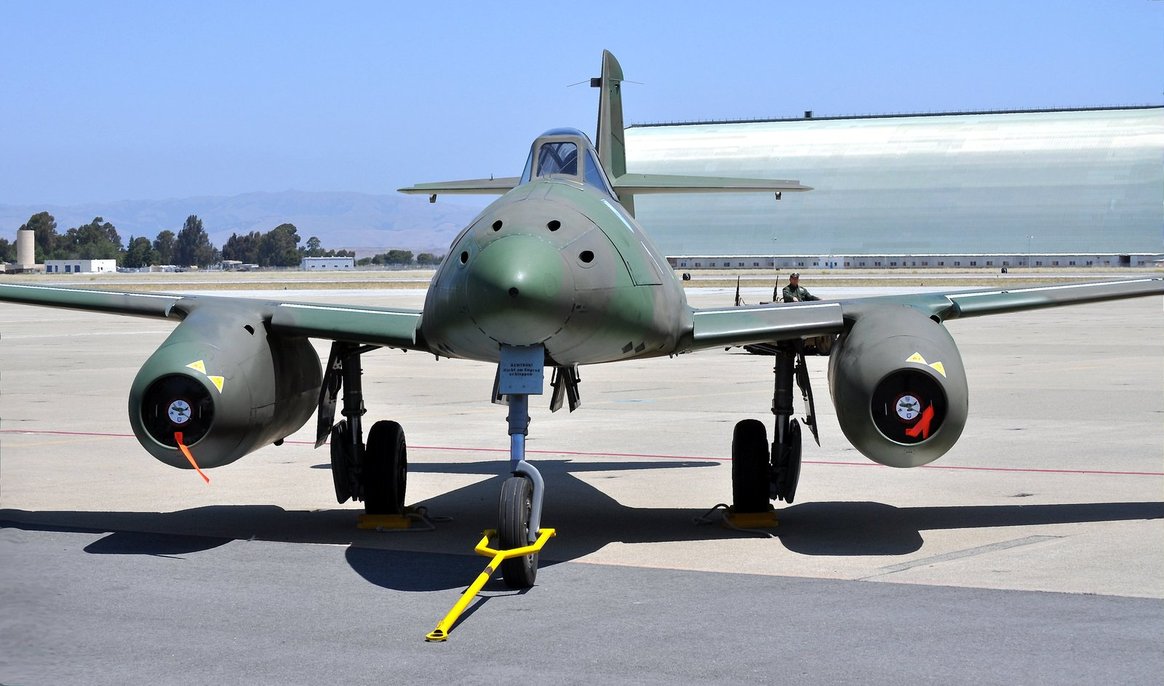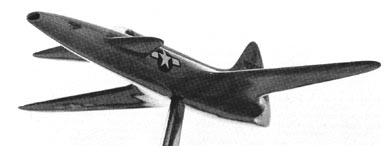|
|
airplane comparisons - WW2 |
Me-262 vs Ho-229Me-262 was studied and well-documented, but Ho-229 remains mysterious. According to Horten brothers, a simulated dog-fight was conducted between Ho-229 and Me-262. Ho-229 outperformed Me-262 by a wide margin. Ho-229 had lower wing-loading and its (untested) design speed was 1000KPH (600MPH). Since Ho-229 was a low-speed glider fitted with jets, US engineers argued Hortens never understood its shape coincidentally happened to improve transonic speed nor stealth. Counter-arguments are German engineers knew to sweep wings in jet aircraft, possibly had discovered, with Horten gliders, flying-wings are intrinsically stealthy, as US later unintentionally discovered with Northrop flying-wings. Reimar Horten said he thought of applying charcoal to absorb radar waves on production models. Decades later, Grumman built a model of Ho-229, demonstrating it wasn't stealthy overall, as cockpit area reflected radar waves, estimating WW2 British radar would've detected it in 80% of distance of propeller fighters. Grumman didn't discover any radar-absorbing material on captured pre-production Ho-229.
|
Me-262 vs Lockheed L-133 or P-80Lockheed began designing its L-133 Starjet back in 1939. Earlier L-133 was actually more advanced than Lockheed's later P-80 Shooting Star which flew in 1944. L-133's airframe was never built. Its engine was built, but it wasn't a success. Design had canards. Wings, fuselage, engines were blended. Design speed was 600MPH. But to reach this speed would've required keeping wings outside sonic shock-waves, either with swept wings or long nose. L-133 and Lockheed's later F-104 Starfighter have a long nose which allows straight wings. Possibly Lockheed engineers first discovered or anticipated this, but kept it a secret (?). Or wings were at rear simply because it was a canard design (?). Was nose long rather to provide space for fuel (?). Me-262 had different advanced features: swept wing and leading-edge slats. (Reason for Me-262's swept wing was for balance, not to delay transonic drag.) It had drag/weight/maneuverability disadvantages with engines slung under its wings. Its tail-plane had elevators, yet entire tail-plane could be rotated (all-moving tail). All-moving tails solve lack of control at transonic speeds, which US didn't solve until years later in F-86 Sabre (a British engineer predicted and solved this prior). P-80 was a conventional straight-wing design with a jet engine shoved in. Lockheed can't be blamed. It was what USAF ordered, a quick conservative design, not a risky advanced one. Two preproduction YP-80s were deployed near end of WW2 but no combat ever occurred. After WW2, US conducted simulated dog-fights with Me-262 vs P-80, concluded two were evenly matched, as their advantages/disadvantages canceled out [ref: "Yeager"].
|
Japanese Zero vs F-14 Tomcat
Too close to call. Enacted in movie "Final Countdown" with Kirk Douglas and Martin Sheen. |
What if WW2 would've continued to 1946?What if WW2 continued to 1946? If German Wehrmacht would've halted western Allies in France, air war would've been quite different in 1946. US would've needed faster advanced planes, rather than long-range planes. In mid-1945, German aviation research was more advanced, but no side fully understood supersonic flight. US/UK didn't understand swept-wings and area rule were keys to supersonic speeds, Germans didn't understand laminar airfoils were another key, none had discovered other keys such as rotating entire tail-plane. Allies would've had in 1946:
Luftwaffe would've had in 1946:
|


